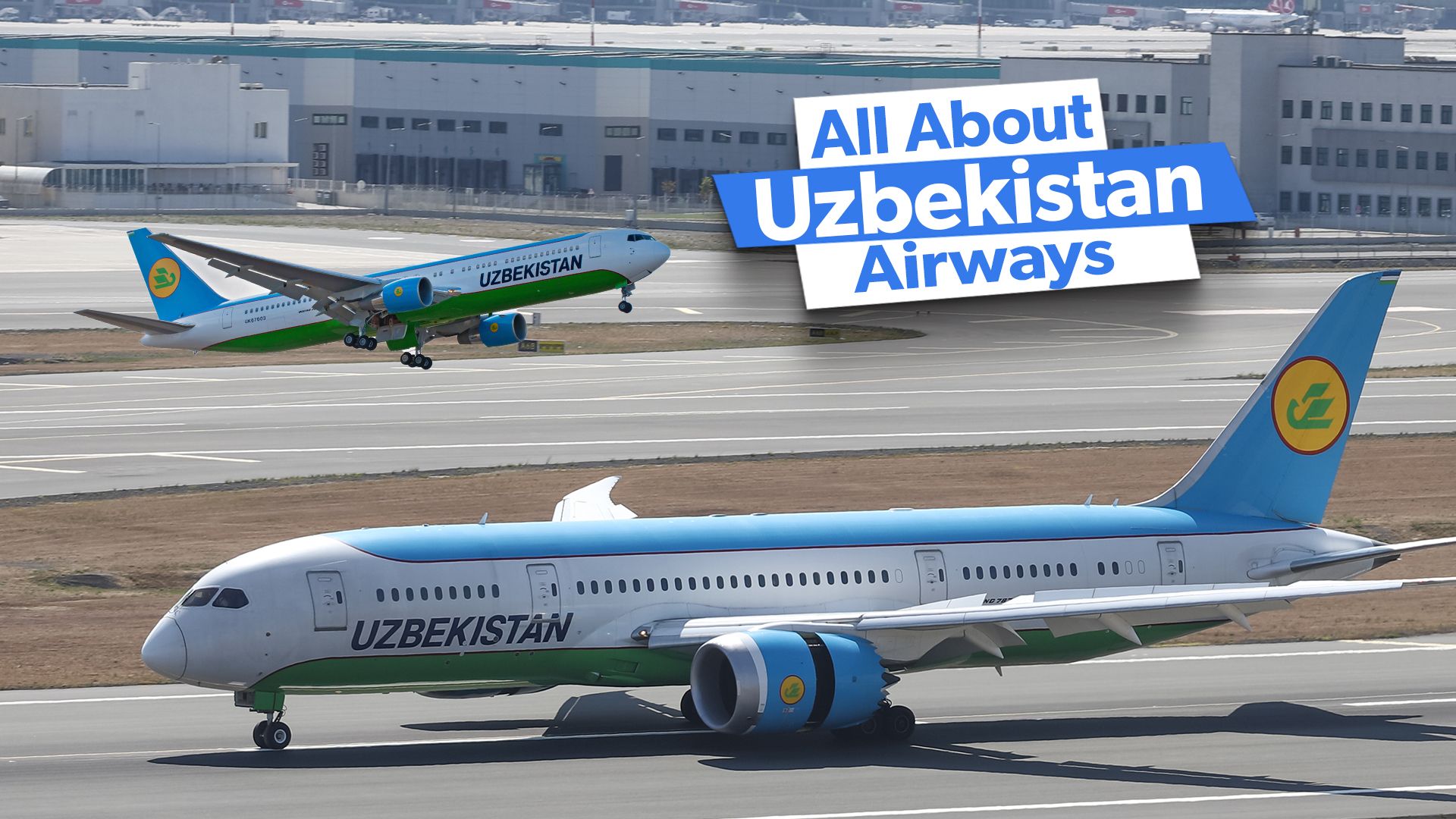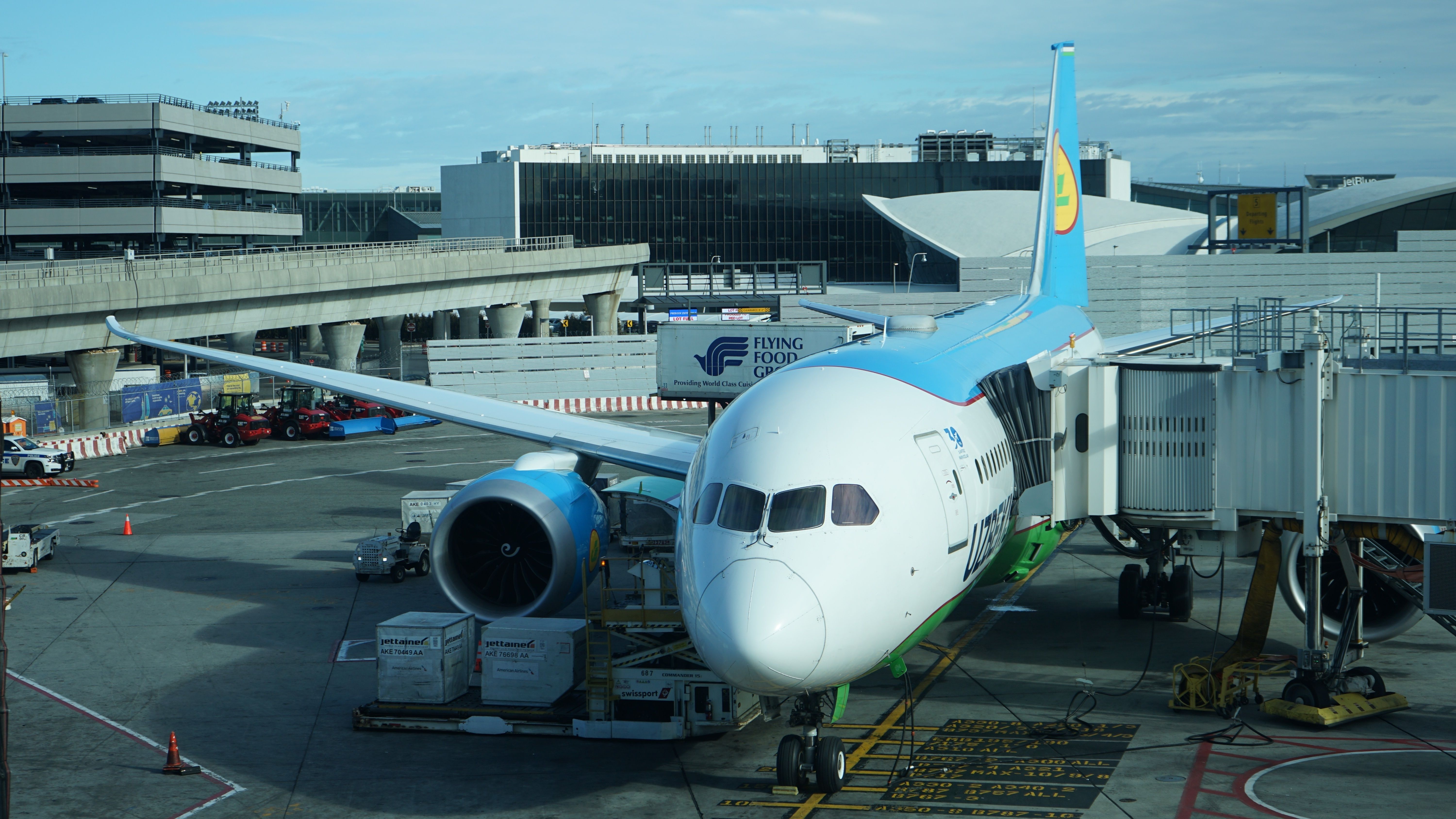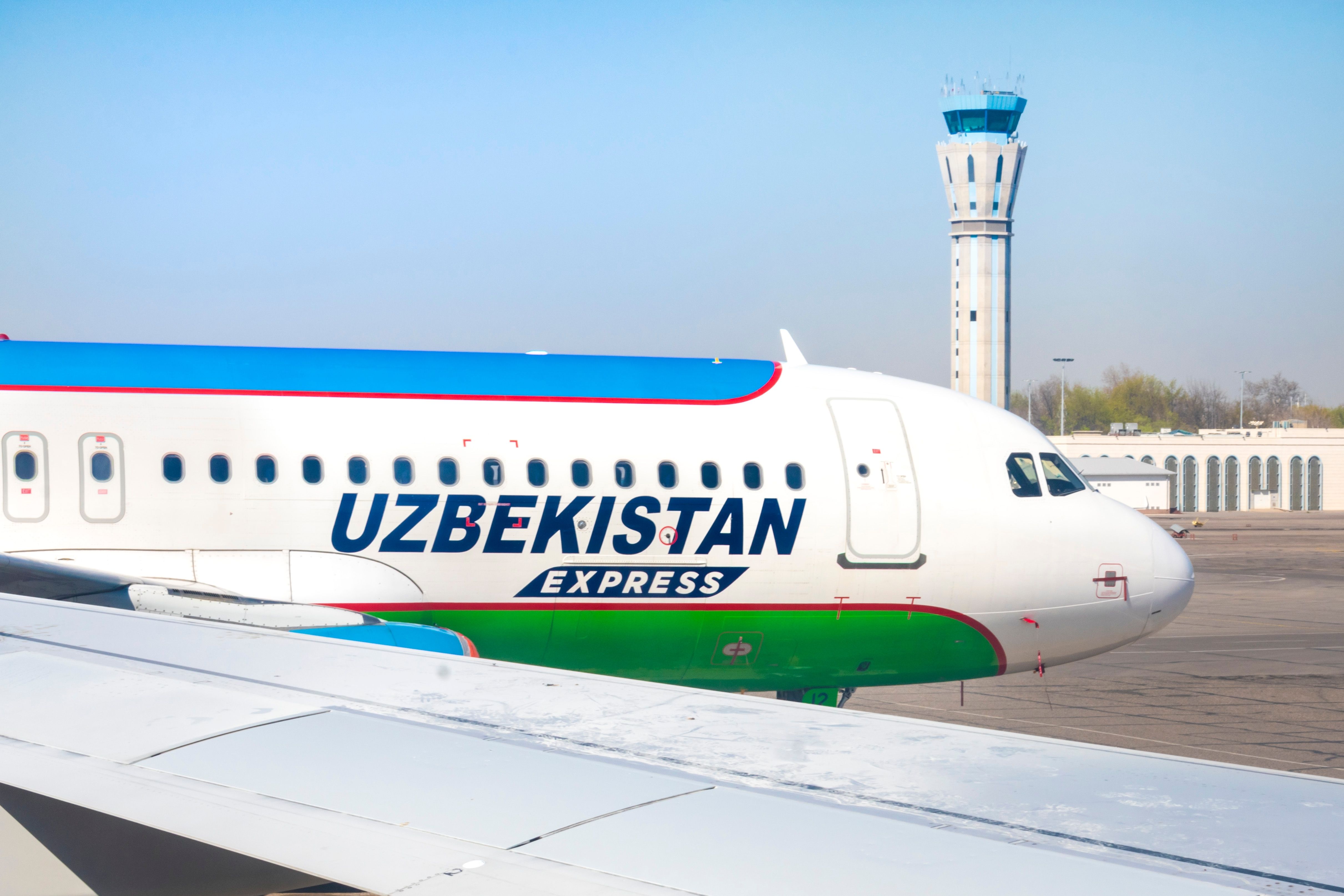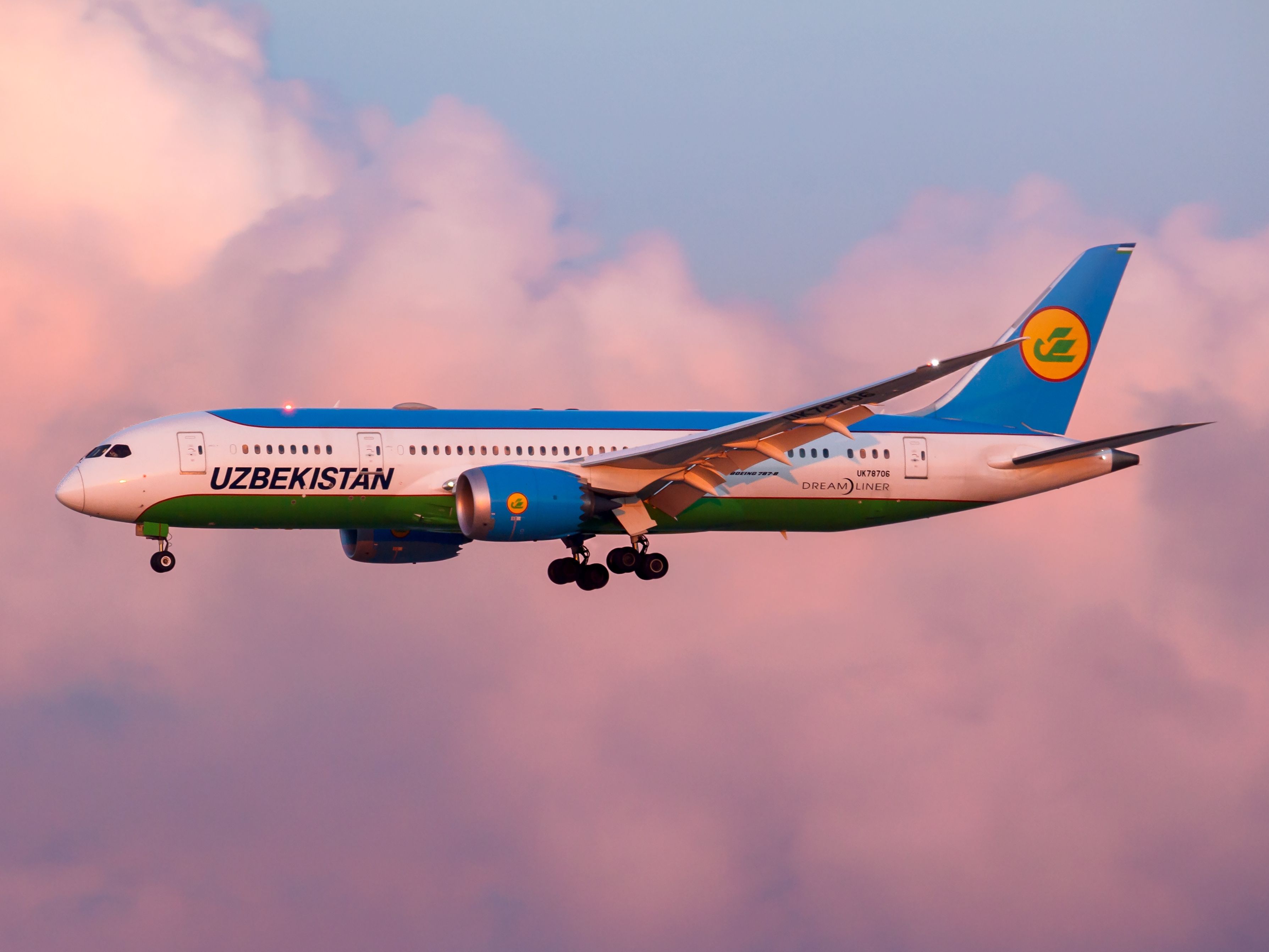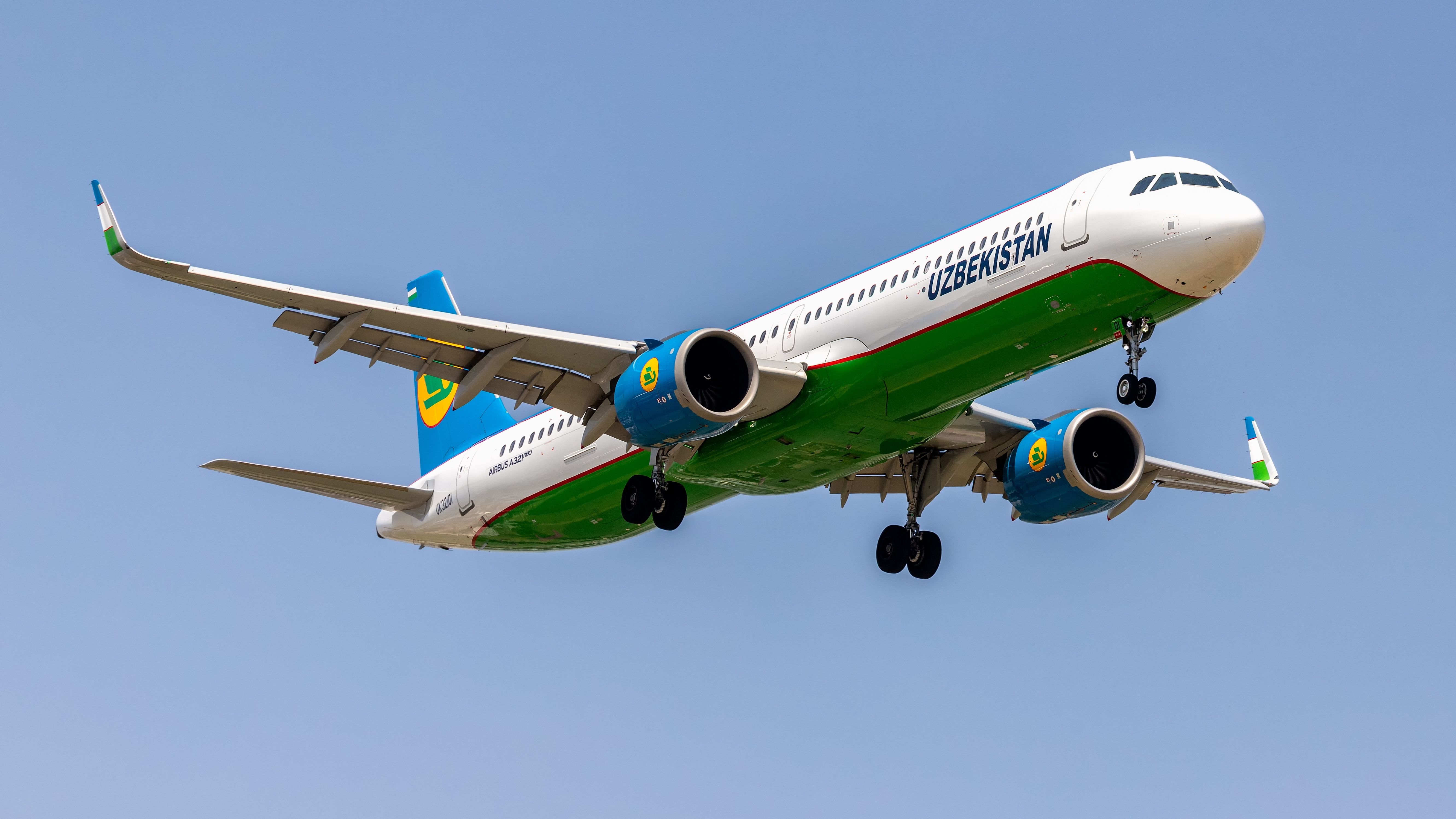Summary
- Uzbekistan Airways, founded after the fall of the Soviet Union, has a robust fleet of over 30 modern aircraft.
- The carrier is steadily growing with more acquisitions and international destinations in the future.
- Uzbekistan Airways has a modern fleet and strong safety reputation, primarily focusing on services to Western Europe.
Uzbekistan Airways
, founded near the collapse of the Soviet Union, stands today as the thriving flag carrier of Central Asian Uzbekistan, operating services across the Asian continent, as well as Europe and beyond. With a robust fleet of over 30 modern aircraft, the carrier stands out among its peers in Central Asia as a leader in global air transportation.
From a hub at Islam Karimov International Airport (TAS) in the nation’s capital city of Tashkent, the carrier operates nonstop flights to over fifty different destinations. Despite its impressive growth since its launch over thirty years ago, the airline is often overlooked in favor of flashier Middle Eastern carriers.
However, the Uzbek flag carrier is only continuing to grow, with more aircraft acquisitions and international destinations on the near horizon. Let’s take a deeper look at this unique airline, and explore everything from its early history to its plans for a vibrant future.
Photo: Bui Le Manh Hung I Shutterstock
Origins, growth, and early operations
In the aftermath of the Soviet Union’s collapse, each former Soviet republic was forced to fend for itself when it came to establishing robust aerial travel networks. As a result, Uzbek President Islam Karimov elected to establish Uzbekistan Airways, a new national airline, on January 28th, 1992.
The carrier would take over the operations of Aeroflot’s former Uzbekistan division on May 31st of the same year and quickly sought both domestic and international growth. Throughout its early years of operations, the carrier’s fleet consisted of a bizarre mix of both Russian-built planes (which were left over from the Aeroflot Uzbekistan takeover) and a few modern Western-made jets. During this period, the carrier operated all the following aircraft:
- Antonov An-24/26
- Ilyushin Il-62
- Ilyushin Il-76
- Ilyushin Il-86
- Tupolev Tu-154
- Yakovlev Yak-40
- Airbus A310-300
The early acquisition of Airbus widebodies in 1993 marked the beginning of what would be a long period of fleet overhaul, a process that would modernize the young airline beyond most of its competitors within the region.
By the mid-1990s, the carrier had begun to turn its interest towards Boeing aircraft, with orders placed for both the 767-300ER and the 757 by the end of 1995, according to Flight International.
Photo: Marina Rich | Shutterstock
However, the airline was not interested in former Soviet aircraft, with the airline serving as the launch customer for the Ilyushin Il-114, one of the first planes to be locally assembled within the nation.
The carrier would later go on to acquire the final Airbus A310 ever to roll off of the assembly lines in 1998 and added two more Boeing 757s to its fleet by the time the new millennium came around, according to Airfleets.
By 2000, the carrier had expanded drastically, and now employed over 16,000 people and operated a mixed fleet including Airbus, Antonov, Ilyushin, Tupolev, Yakovlev, and Boeing aircraft. The airline also deployed Avro Regional Jets for shorter connections within the Central Asian region.
Throughout the 200s, the airline quickly began ordering more Boeing aircraft, while simultaneously beginning to phase out older-generation Soviet planes. By 2014, the airline had managed to transport over 2 million passengers annually, while also managing to grow its cargo arm significantly.
Uzbekistan Airways today
As of 2024, Uzbekistan Airways has successfully retired all Soviet-built aircraft and has continued to expand its fleet with modern airliners. Today, the carrier’s fleet includes all the following models:
|
Aircraft type: |
Number in Uzbekistan Airways fleet: |
|---|---|
|
Airbus A320-200 |
10 |
|
Airbus A320neo |
3 |
|
Airbus A321LR |
5 |
|
Airbus A330-200 |
1 |
|
Boeing 757-200 |
4 |
|
Boeing 767-300ER |
7 |
|
Boeing 787-8 |
6 |
|
Let L-410 Turbolet |
1 |
Furthermore, the carrier’s push toward fleet expansion remains ongoing, with outstanding orders for multiple models still on the books. These include orders for the A320neo, the Boeing 787, and the Czech-built L-410, alongside a relatively unique order for one of the last Airbus A330-200 models ever to be built.
Photo: MBekir | Shutterstock
The carrier also has an outstanding order for four Airbus A321neo jets, which, according to Airbus, have yet to be delivered. The airline’s cargo fleet is also noteworthy, as it consists of two Boeing 767-300 converted freighters.
As of 2024, Uzbekistan Airways’ modern fleet has been a major contributor to its increasingly strong safety reputation, something which sets the airline apart from many of its regional competitors. According to the Aviation Safety Network, Uzbekistan Airways has never had any kind of accident involving any of its Western-built aircraft.
The last notable incident occurred in 2009 when an Antonov An-24 suffered from premature retraction of the undercarriage after departure from Zarafshan Airport (AFS). The incident resulted in no fatalities. The carrier experienced three fatal accidents between 1999 and 2006, all of which involved Soviet-built aircraft.
Network, connectivity, loyalty, and industry cooperation
Today, the Uzbekistan Airways network primarily focuses on service to destinations in Western Europe, with flights to cities like London, Paris, and Rome. The airline also provides connections to destinations across Eastern and Southern Asia, with multiple destinations in China, India, and Japan. Furthermore, the airline is also one of just a few to maintain New York’s John F. Kennedy International Airport (JFK) as its only US destination.
Photo: Telsek | Shutterstock
Despite its growth, the airline has yet to join any major industry alliance, but it does maintain a popular loyalty program, called Uz Air Plus. The airline offers both economy and business class seating onboard the majority of its aircraft. Furthermore, the airline maintains a handful of codeshare and interline agreements with carriers such as Korean Air, Turkish Airlines, Delta Air Lines, and Qatar Airways.

